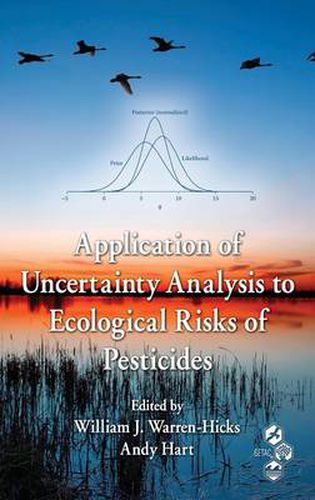Readings Newsletter
Become a Readings Member to make your shopping experience even easier.
Sign in or sign up for free!
You’re not far away from qualifying for FREE standard shipping within Australia
You’ve qualified for FREE standard shipping within Australia
The cart is loading…






While current methods used in ecological risk assessments for pesticides are largely deterministic, probabilistic methods that aim to quantify variability and uncertainty in exposure and effects are attracting growing interest from industries and governments. Probabilistic methods offer more realistic and meaningful estimates of risk and hence, potentially, a better basis for decision-making. Application of Uncertainty Analysis to Ecological Risks of Pesticides examines the applicability of probabilistic methods for ecological risk assessment for pesticides and explores their appropriateness for general use.
The book presents specific methods leading to probabilistic decisions concerning the registration and application of pesticides and includes case studies illustrating the application of statistical methods. The authors discuss Bayesian inference, first-order error analysis, first-order (non-hierarchical) Monte Carlo methods, second-order Bayesian and Monte Carlo methods, interval analysis, and probability bounds analysis. They then examine how these methods can be used in assessments for other environmental stressors and contaminants.
There are many methods of analyzing variability and uncertainty and many ways of presenting the results. Inappropriate use of these methods leads to misleading results, and experts differ on what is appropriate. Disagreement about which methods are appropriate will result in wasted resources, conflict over findings, and reduced credibility with decision makers and the public. There is, therefore, a need to reach a consensus on how to choose and use appropriate methods, and to present this in the form of guidance for prospective users. Written in a clear and concise style, the book examines how to use probabilistic methods within a risk-based decision paradigm.
$9.00 standard shipping within Australia
FREE standard shipping within Australia for orders over $100.00
Express & International shipping calculated at checkout
While current methods used in ecological risk assessments for pesticides are largely deterministic, probabilistic methods that aim to quantify variability and uncertainty in exposure and effects are attracting growing interest from industries and governments. Probabilistic methods offer more realistic and meaningful estimates of risk and hence, potentially, a better basis for decision-making. Application of Uncertainty Analysis to Ecological Risks of Pesticides examines the applicability of probabilistic methods for ecological risk assessment for pesticides and explores their appropriateness for general use.
The book presents specific methods leading to probabilistic decisions concerning the registration and application of pesticides and includes case studies illustrating the application of statistical methods. The authors discuss Bayesian inference, first-order error analysis, first-order (non-hierarchical) Monte Carlo methods, second-order Bayesian and Monte Carlo methods, interval analysis, and probability bounds analysis. They then examine how these methods can be used in assessments for other environmental stressors and contaminants.
There are many methods of analyzing variability and uncertainty and many ways of presenting the results. Inappropriate use of these methods leads to misleading results, and experts differ on what is appropriate. Disagreement about which methods are appropriate will result in wasted resources, conflict over findings, and reduced credibility with decision makers and the public. There is, therefore, a need to reach a consensus on how to choose and use appropriate methods, and to present this in the form of guidance for prospective users. Written in a clear and concise style, the book examines how to use probabilistic methods within a risk-based decision paradigm.